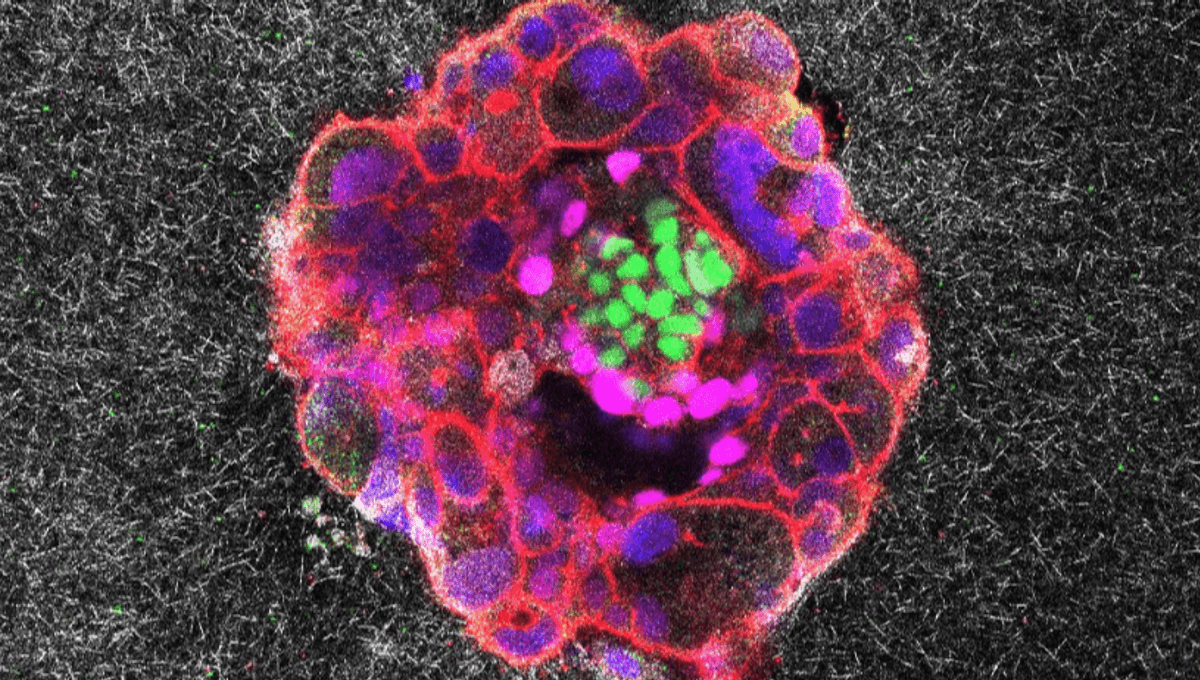
For the first time ever, researchers have captured a human embryo implanting in real-time, revealing new details about the surprisingly strong mechanical forces this little bundle of cells uses to burrow itself into the uterus.
The rest of this article is behind a paywall. Please sign in or subscribe to access the full content.
Embryo implantation was far from an entirely mysterious phenomenon until this point. Scientists already knew that human embryos produce a cocktail of enzymes that help to break down the lining of the uterus, or womb, so that they can nestle inside, and that there was likely some force involved here too.
But there are some key problems with the research that helped us figure such things out. First, the process had only ever been captured indirectly, with images taken from fixed samples, like a snapshot in time. That’s because getting into a human body to live-record what’s happening is basically a no-go.
Second, much of the research in this area has focused on what’s happening on a biochemical and genetic level, so there’s a significant gap when it comes to understanding the mechanical forces behind the process – something that real-time footage could also help with.
And that’s where researchers at the Institute for Bioengineering of Catalonia (IBEC) and the Reproductive Medicine Department at Dexeus Mujer–Hospital Universitari Dexeus came in, creating a synthetic uterine lining that they could image in real-time as embryos burrowed into it.
It doesn’t solve the problem of viewing implantation inside the body, but it’s arguably the next best thing. The synthetic lining consists of a gel that’s made up of a matrix of collagen – an essential structural protein that’s abundant in the uterus – and a bunch of other proteins required for an embryo to develop.
Using this platform, the researchers not only captured the first-ever real-time footage of implantation, but also discovered that human embryos exert traction forces – the type of force that facilitates movement – on the uterine matrix as they implant themselves, essentially pushing it out of the way and remodeling it.
“We have observed that human embryos burrow into the uterus, exerting considerable force during the process,” explained study lead Samuel Ojosnegros in a statement. “These forces are necessary because the embryos must be able to invade the uterine tissue, becoming completely integrated with it. It is a surprisingly invasive process. Although it is known that many women experience abdominal pain and slight bleeding during implantation, the process itself had never been observed before.”
A human embryo “also reacts to external force cues,” added co-first author Amélie Godeau. “We hypothesise that contractions occurring in vivo may influence embryo implantation.”
While capturing the footage is an achievement in itself, it serves an important purpose beyond being amazing to look at or gaining more knowledge about the process simply for knowledge’s sake. According to the authors, 60 percent of miscarriages are the result of implantation failure; by finally capturing the process in real-time, and understanding more about it as a result, it takes us one step closer to figuring out how we might be able to stop it from failing.
The study is published in Science Advances.
Source Link: First-Of-Its-Kind Footage Shows Human Embryo Implantation In Real-Time